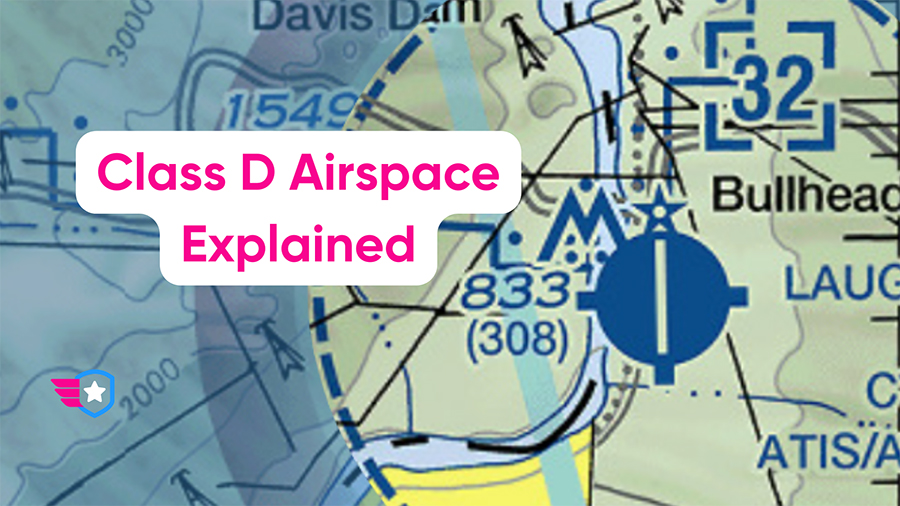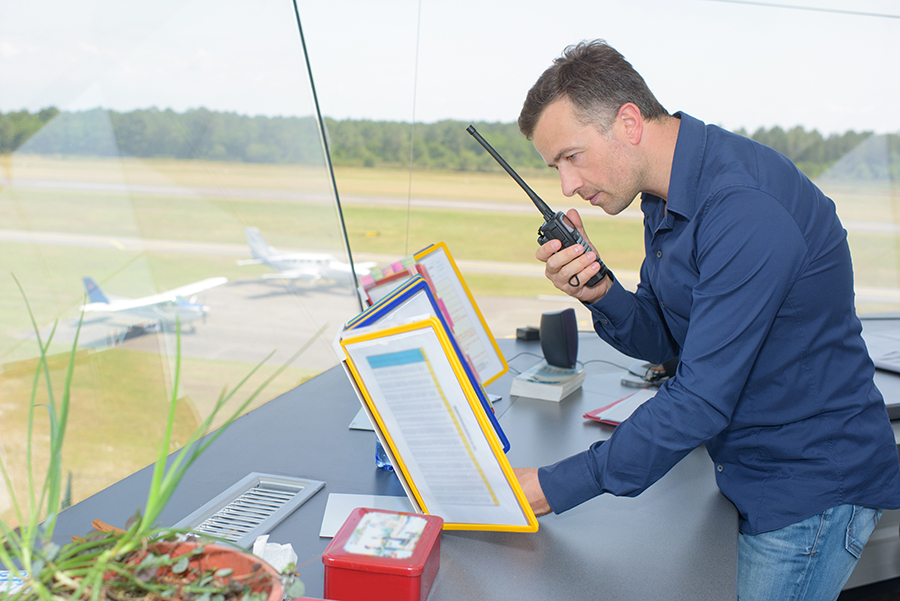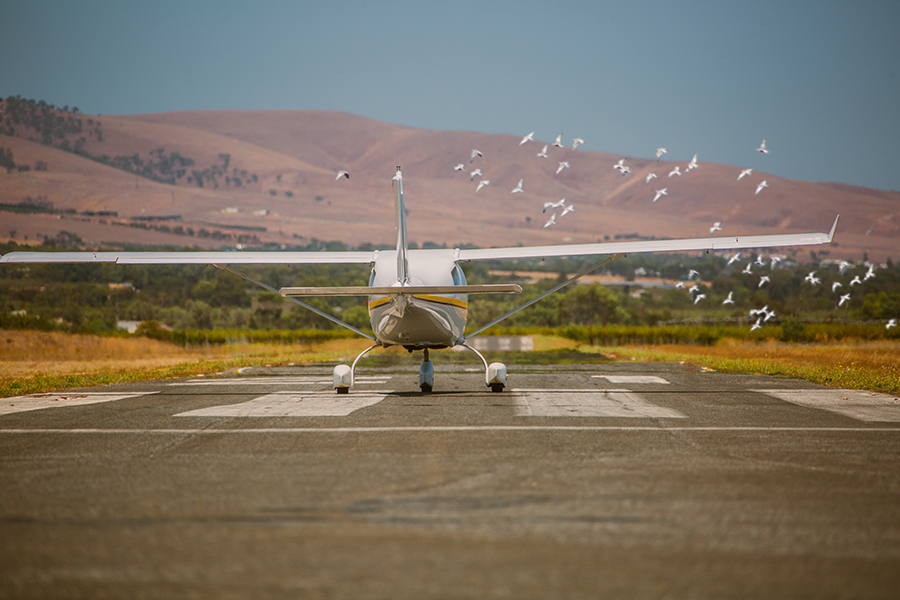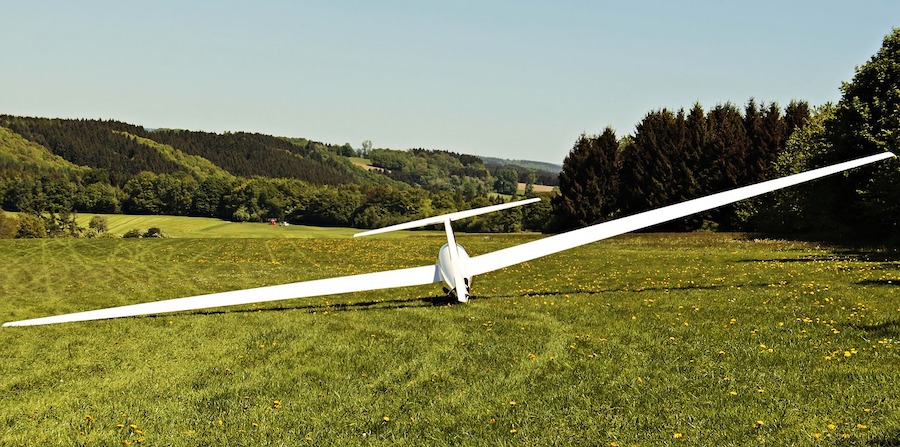Airspace is all around us; some is regulated, while other is not.
Regulated airspace is classified into four types:
- Controlled
- Uncontrolled
- Special Use
- Other
Its classification depends on multiple factors, including the complexity and nature of operations within it, the required level of safety, and the interest in having such airspace categorized.
Controlled airspace, in particular, is further categorized into:
- Class A
- Class B
- Class C
- Class D
- Class E
Although all categories of airspace are important for pilots to be familiar with, this article focuses on the definition, operating rules, pilot/equipment requirements, and best practices for flying in Class D airspace.
Class D Airspace Definition
Class D airspace surrounds airports with an operational control tower and generally extends from the surface to 2,500 feet above ground level.
This category of airspace normally contains instrument approaches. Two-way radio communication must also be established with the control tower prior to entering and while operating within the airspace.
It is essential for pilots to be familiar with Class D airspace because this category of airspace surrounds most small airports with control towers in the United States, allowing for controlled and efficient handling of general aviation and commercial traffic. This means that you’ll find everything from 737s to 172s operating in Class D airspace.
Class D Airspace Basics and More
Class D airspace is typically cylindrical in shape extending from the surface to 2,500 feet above ground level.
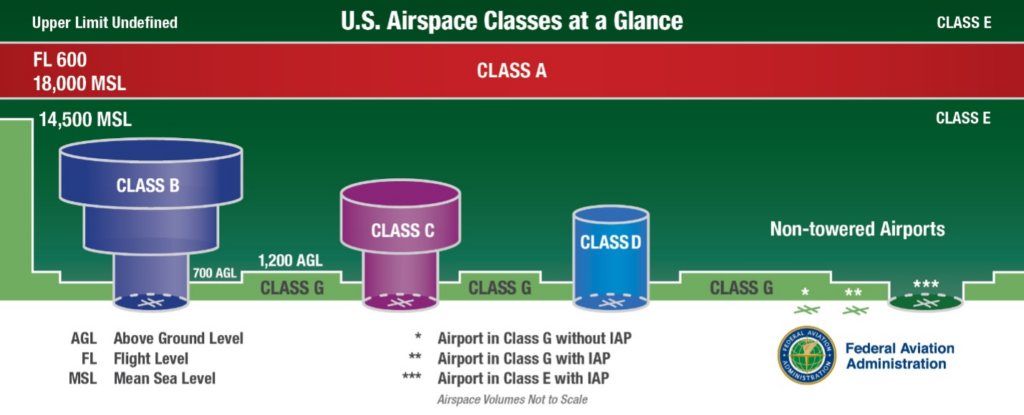
Class D airspace is depicted on Sectional and Terminal charts with blue segmented lines. The blue number inside the segmented square indicates the upper boundary of the Class D airspace in the Mean Sea Level (MSL).
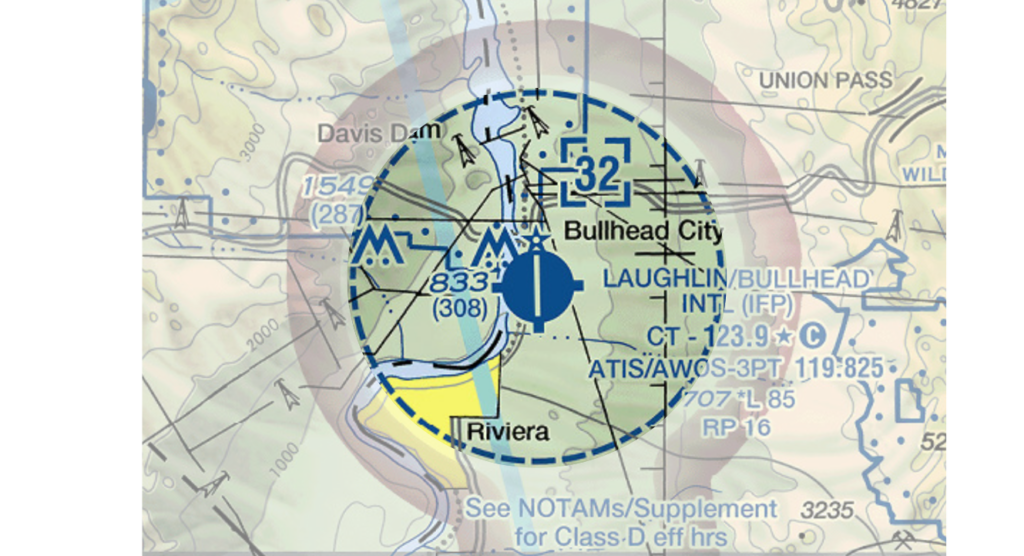
The configuration of each Class D airspace area is individually tailored to meet the operational needs of the airport. This means that you’ll often find Class D airspace deviating from a perfect cylindrical shape.
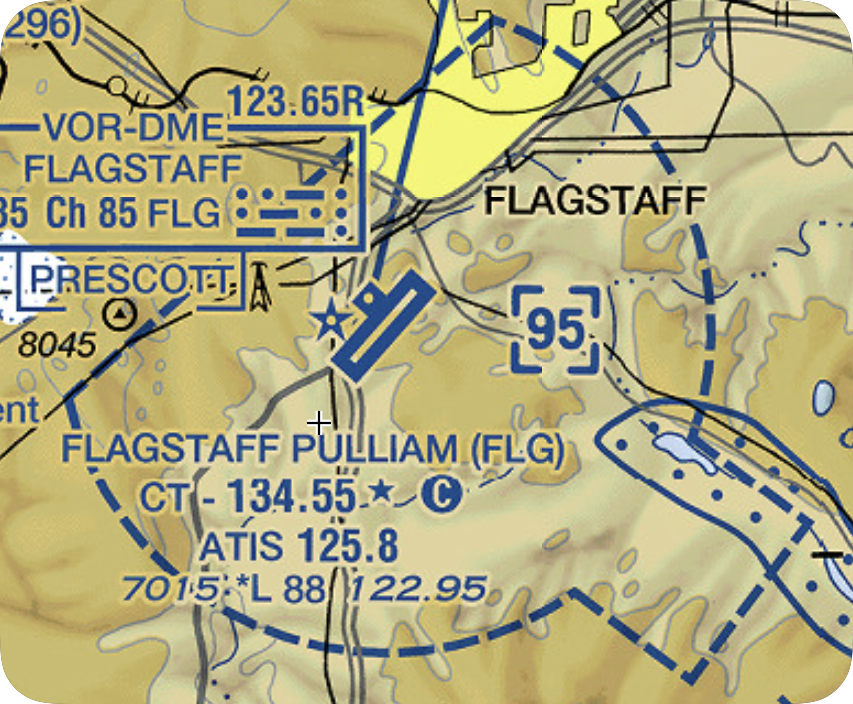
Notice the extension to the Class D airspace at Flagstaff Pulliam Airport? That’s to accommodate the missed approach procedure for the RNAV approach on runway 21, which requires a left turn towards the east.
Class D Airspace Control Towers
When a control tower is designated as part-time, the hours of operation are published in the Chart Supplement. When the control tower is closed, the airport reverts to a Class E or Class G (i.e., uncontrolled) airspace, which is also published in the Chart Supplement.

Class D vs. Other Airspace
While Class D airspace overlays smaller airports (e.g., Dallas Executive Airport), Class C airspace overlays larger airports (e.g., Austin–Bergstrom International Airport).
Furthermore, Class B airspace overlays larger airports that have grown and evolved over time (e.g., Dallas Fort Worth International Airport). Therefore, there are more restrictive operational requirements due to the increased complexities of Class C and B airspaces, such as the need for a working radar beacon transponder with automatic altitude reporting capability and ADS-B Out equipment.
Class A airspace extends from 18,000 feet up to and including FL 600. This airspace is generally occupied by commercial traffic and again has more restrictive operational requirements, such as the need to operate the aircraft under IFR.
Class E airspace is the largest airspace in the United States and is designated to fill in all the gaps between the other controlled and uncontrolled airspace. Class E airspace serves numerous terminal and enroute purposes.
Requirements for Operating in Class D Airspace
So, what do you need to operate in Class D airspace?
There are no specific pilot certification requirements to operate in Class D airspace, however, aircraft operating in Class D must have a working two-way radio installed.
Two-way radio communication must be established with the control tower prior to entry and while operating within the Class D airspace. While contacting the control tower, the pilot must state their position, altitude, destination, and intentions. If the controller acknowledges the aircraft callsign, then radio communication is established, and entry into the Class D airspace is allowed. At airports with part-time control towers, the pilot should reference the Chart Supplement for procedures when the control tower is closed.
Class D Speed Limit
While within Class D airspace, there is also an established speed limit. Any aircraft operating at or below 2,500 feet above ground level and within 4 nautical miles of the airport must maintain an airspeed of 200 knots or less.
Class D Weather Minimums
For basic VFR traffic only, there are also weather requirements that must be followed. These include 3 statute miles of flight visibility, as well as 1,000 feet of separation above clouds, 500 feet below, and 2,000 feet horizontally. In addition, VFR traffic may not operate in the Class D airspace when the ceiling is less than 1,000 feet.
Tips for Flying in Class D Airspace
A thorough review of Sectional and Terminal charts provides pilots with information on how to navigate in and out of airports and the controlled airspace surrounding them. Airport diagrams also allow pilots to become familiar with crucial information after landing, including taxiways, ramps, frequencies, etc. In addition, the Chart Supplement should be referenced for part-time control tower operations.
Conclusion
From its defining characteristics to the key requirements for operating within it, Class D airspace is a crucial component of the airspace structure in the United States. While it surrounds smaller airports with operational control towers, don’t mistake its size for simplicity. The rules in place ensure the smooth handling of various aircraft, from bustling commercial jets to the humble Cessna 172s.
Armed with this knowledge, you’re ready to handle the challenges of Class D airspace. With good preparation and a clear understanding of the rules, you can navigate these skies with confidence.
Always keep an eye on your charts, maintain clear communication, and remember: safe flying is no accident. Here’s to clear skies and tailwinds on your next journey through Class D airspace!
